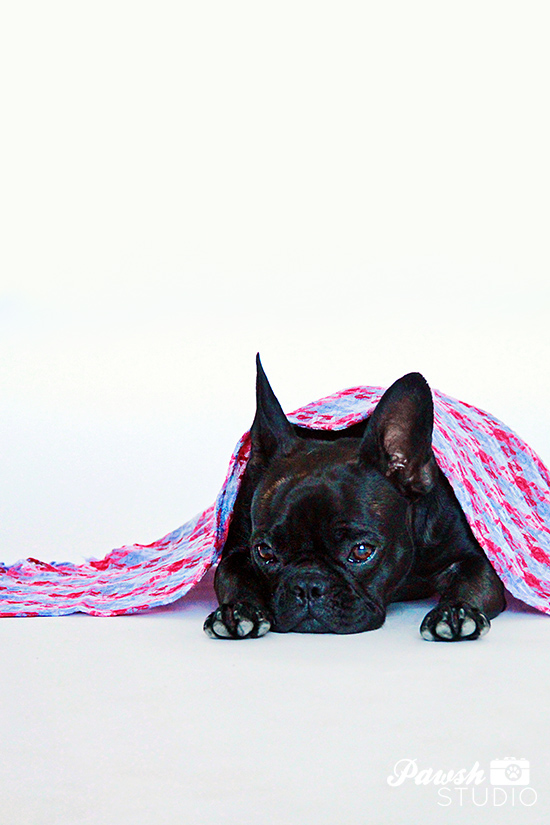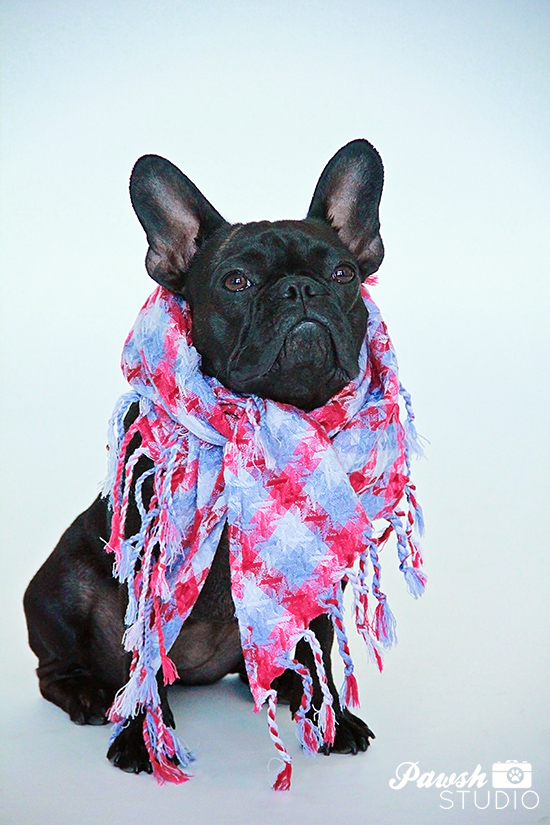
When the mercury dips below zero and the world becomes hidden beneath a blanket of snow it is not uncommon for the sniffles and sneezes to find their way into our homes. But did you know that our dogs are also susceptible to winter ailments?
Dr. Aleksandra of Queen West Animal Hospital in Toronto reveals the top winter dangers to watch out for – and how to avoid them.
1. Respiratory ailments
Unlike humans, the flu in dogs can be defined as any number of respiratory complications from commonly know conditions such as kennel cough to more complex infections. “Just like us, a dog’s body needs to make more of an effort to keep warm in the winter,” says Dr. Aleksandra. “If the body gets cold it is more vulnerable to sickness.”
Dogs who have any sort of diagnosis like heart ailments or diabetes are more prone to hypothermia. “Dogs with these sort of medical issues have a hard time maintaining their body temperature when faced with cold weather for a long time,” explains Dr. Aleksandra.
Another concern with water-loving dogs in the winter is being exposed to frozen lakes. “Dogs who are so happy to go to the water in the summer months often don’t realize that there is thin ice and fall in during the winter,” says Dr. Aleksandra. “They can get hypothermia extremely fast and are prone to pneumonia a day or two after such an event.”
In the spirit of being better safe than sorry, it is best to keep dogs away from bodies of water in the winter.
Of course it is important to keep in mind that different breeds react differently to the cold. According to Dr. Aleksandra, a large muscular husky with a thick luscious coat will probably be okay for a couple of hours outside, but a little dachshund who is shoulder deep in the snow is more likely to get cold and has an increased risk of developing hypothermia more quickly.
Senior dogs and very young pups are especially prone to developing respiratory conditions as a result of too much cold exposure.
“A good rule of thumb is if you’re cold, your dog is probably cold too,” advises Dr. Aleksandra. “Be mindful of how long you have been outside and conscious of what your dog is feeling.”
2. Arthritis
Although arthritis doesn’t appear all of a sudden in the winter, it does flare up with the cold.
“Inflammation, in humans and dogs, gets worse in the cold and really acts up,” says Dr. Aleksandra, who advises that dogs without pain medication during the warmer months of the year may need a prescription or some sort of natural supplement to be comfortable during the winter.
3. Burns
A rather unknown danger to pets during the winter is burns. Dr. Aleksandra says that her clinic sees a lot of skin burns as a result of dogs sleeping too close to fireplaces or space heaters. “They fall asleep next to a heater and their fur gets caught,” she says. “They are doing their best to keep warm, but don’t realize the danger they are putting themselves in.”
The burn is only part of the concern with this issue, however, as most dogs will not leave a wound alone and will lick it repeatedly which can cause infection. Similarly, sitting next to a focused heat source can irritate a dog’s skin and cause a lot of discomfort, so be sure to keep fire screens in place an space heaters elevated beyond a dog’s reach.
 4. Frostbite
4. Frostbite
“Frostbite in a Canadian winter is very much a no-brainer,” says Dr. Aleksandra. It is important not to leave your dog outside unattended, as a dog’s ears, paws, tail and even nose are all extremely sensitive to the cold.
If you have a working dog in the country, providing excellent warm shelter, wind protection and a lot of good bedding is key to combating the risk of frostbite. “You should also provide water that is not frozen,” says Dr. Aleksandra.
As for urban dogs, Dr. Aleksandra once again prescribes common sense: “If you’re cold, your dog may be cold too.”
5. Dry skin
Summertime is drenched with high humidity levels, which often naturally addresses dry skin concerns in dogs. But when winter hits, skin can become more easily irritated.
If left untreated, dry skin can evolve from a pesky cosmetic issue into a serious medical concern. “Some animals’ skin will get red and flake off, which then becomes an easy point of entry for bacteria that usually lives on a dog’s skin, leading to infection and all sorts of complications,” explains Dr. Aleksandra.
Ask your vet about shampoos and topical treatments that can help prevent and treat dry skin.
6. Fleas
Perhaps one of the most surprising ailments to afflict pets in the winter is fleas. “I see fleas all the time in winter, much to the bewilderment of owners,” says Dr. Aleksandra. “It may be cold outside, but it’s 25 degrees C at your place and fleas are attracted to warm environments.”
As soon as it gets cold outside, the majority of people stop flea prevention. But fleas don’t die in the cold, instead they go dormant. If they migrate to a warm environment, such as an apartment or other urban dwelling, they will cosily reproduce and voila – flea outbreak! Continue flea prevention treatments to avoid an unwanted infestation.
7. Cracked paws
Salted roads and sidewalks can wreak havoc on a dog’s paws and cause cracking which in turn can lead to serious infection. “Pick up a paw balm of some sort and wash the paws after every walk to prevent cracking,” advises Dr. Aleksandra.
